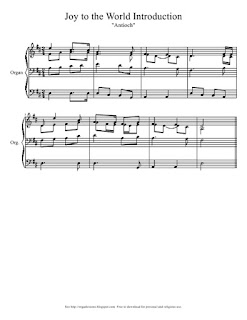At the BYU Organ Workshop, Linda Margetts shared the following information in one of the workshop classes. Much of the information was taken from The Anatomy of Hymnody by Austin C. Lovelace, but the examples of LDS Hymns are hers.

A hymn can be defined as a poetic statement of a personal religious encounter or insight, universal in its truth, and suitable for corporate expression when sung in stanzas to a hymn tune. Perhaps a few forms of poetry are so widely known and used, and so generally misunderstood and unappreciated. They hymn is one of the most difficult of all poetic forms to master, for its small palette and vast subject matter make demands on technique which give pause to the great poets.
Like the human body, a hymn has a skeleton (which can be called the metrical design) and characteristics determined by the choice of poetic "foot."
Iambic _/ for example, How Great the Wisdom and the Love #195
Trochaic /_ for example, Jesus, Once of Humble Birth #196
Dactylic /_ _ for example, Dear to the Heart of the Shepherd #221
Anapaaestic _ _/ for example, Have I Done Any Good in the world today? #223
It is a complete body, made up of several parts (stanzas), each with its definite function. Its visage or physiognomy is determined by the poetic devices the poet chooses. Underlying all the physical features, however, is the soul of the hymn--man's response to God.
Poetic Devices
Allegory: Dear to the Heart of the Shepherd #221
The Shepherd finding the lost sheep is likened to our Savior's caring of us.
Alliteration: Repetition of the same first letter or sound in a group of words. "Some sheltering shade where sin and striving cease."
"Praise to the Lord, the Almighty, the
King of Creation." #72
"He has
loosed the fateful
lightning of his terrible
swift sword." #60
Anadiplosis (Ana/di/plo'/sis): Using words or ideas, which end one stanza as the start of the next.
An Angel from on High #13:
"An Angel from on high
The long, long silence broke;
Descending from the sky,
These gracious words he spoke:
Lo! In Cumorah's lonely hill
A scared record lies concealed
Lo! In cumorah's lonely hill
A sacred record lies concealed.
"Sealed by Moroni's hand,
It has for ages lain
To wait the Lord's command,
From dust to speak again."
Anaphora: Repetition of a word at the start of successive lines.
Beautiful Zion Built Above #44:
"Beautiful Zion, built above;
Beautiful city that I love;
Beautiful gates of pearly white;
Beautiful temple-- God is light;"
Dear to the Heart of the Shepherd #221:
"Dear to the heart of the Shepherd,
Dear are the sheep of his fold;
Dear is the love that he gives them,
Dearer than silver or gold.
Dear to the heart of the shepherd,
Dear are his 'other' lost sheep;"
If You Could Hie to Kolob #284:
"There is no end to virtue;
There is no end to might;
There is no end to wisdom;
There is no end to light.
There is no end to union;
There is no end to youth;
There is no end to priesthood;
There is no end to truth.
There is no end to glory;
There is no end to love;
There is no end to being;
There is no death above."
Come Home (from August Ensign)
"Come Home, the Father calls,
Come home, my child, to me.
Come Home."
Antithesis: Sharply contrasted ideas set in balance.
Come, Come Ye Saints #30 contrasts the hardships of life with God's perspective and aid.
"Come, come, ye Saints, no
toil nor
labor fear;
But with
joy wend your way.
Though
hard to you this journey may appear,
Grace shall be as your day."
"Why should we
mourn or think our lot is
hard?
'Tis not so;
all is right."
"And should we
die before our journey's through,
Happy day!, All is
well!"
Epizeuxis: Immediate repetition of a word or phrase in the same line.
Beautiful Zion Built Above #44
"Zion, Zion, lovely Zion; Beautiful Zion; Zion, city of our God!"
Lord Accept Our True Devotion#107
"Never leave us, never leave us. Help us, Lord, to win the race."
Echphonesis: The use of exclamation point for emphasis.
Master the Tempest is Raging #105
"Master, the tempest is raging! The billows are tossing high!"
Epistrophe: Repetition of a word or words at the end of lines or phrases.
God Speed the Right #106
"Now to heav'n our prayer ascending, God speed the right;
In a noble cause contending, God speed the right.
Be our zeal in heav'n recorded, with success on earth rewarded.
God speed the right."
Epimone: A refrain.
Rejoice the Lord is King #66
"Lift up your heart! Lift up your voice! Rejoice, again I say, rejoice!"
Verse and refrain or chorus.
Example: Battle Hymn of the Republic #60. What is this refrain doing? How can we convey that with registration?
Example: Praise to the Man #27. The refrain can be different. How? Louder? Different pedal?
Hypotyposis: A vivid description designed to bring a scene clearly before the eyes.
With All the Power of Heart and Tongue #79
"Amidst a thousand snares I stand,
Upheld and guided by thy hand.
They words my fainting soul revive
And keep my dying faith alive."
...and More
In addition to all of these poetic devices, there are also examples of simile, paradox, personification, rhetorical question, hyperbole, and many more.
Conclusion
Singing praise to God is a matter of no small importance.
"Love so amazing, so divine, demands my soul, my life, my all."
Unless the hymns we sing become our personal expressions, and the thoughts expressed become our own thoughts, our worship will be vain before God.
In
1 Corinthians 14:15 Paul holds up the ideal toward which all must strive:
"I will sing with the spirit, and I will sing with the understanding also."


































